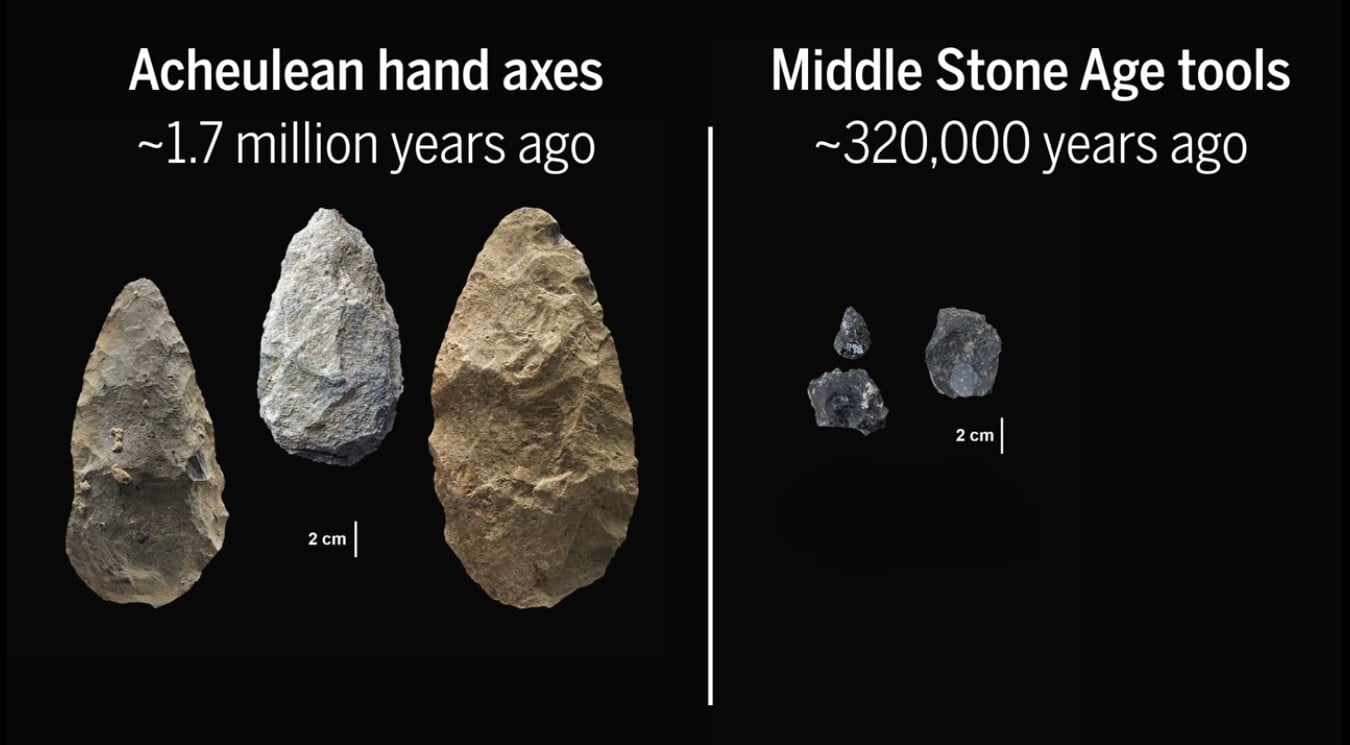A team at the Smithsonian National Museum of Natural History collaborated with an international team in order to uncover and study tools in Kenya, believed to originate from the Stone Age. The discovery changes our understanding of pre-history and our ancestors better.
The anthropologists discovered that our ancestors who lived in East Africa had started trading with different groups around 320,000 years ago. They were trading color pigments and creating more useful tools compared to those that existed in the Early Stone Age. The new tools date roughly to the oldest known fossilized remains of Homo sapiens. They date tens of thousands of years earlier than what researchers found in their recent discovery.
This important discovery and evidence of early humans behaving more modern than earlier believed originates from the Olorgesailie Basin in southern Kenya. The new discoveries of tools in Kenya were described in three studies that were published on March 15 in the journal Science.
Earthquakes active at that time changed the landscape. Furthermore, climate was changing, often from wet or dry conditions, which led to technological innovations that helped humans continue to survive in their lifestyle, and gather and exchange resources that helped them survive in a cruel and unpredictable environment, according to the scientists.
“This change to a very sophisticated set of behaviors that involved greater mental abilities and more complex social lives may have been the leading edge that distinguished our lineage from other early humans,” Rick Potts, director of the National Museum of Natural History’s Human Origins Program said in a statement.
Potts has been leading the Human Origin Program’s research in Olorgesailie for over 30 years, and coordinated with the National Museums of Kenya. He is also the lead author of one of the three scientific papers that looks into how early humans adapted to the new conditions and turned it in their favor.
Alison Brooks, a professor of anthropology at George Washington University’s Center for the Advanced Study of Human Paleobiology and an associate of the museum’s Human Origin Program, lead the paper that sheds light on the early resource exchange and how early humans used materials with different colors in the Olorgesailie Basin. Alan Deino of Berkeley Geochronology Center wrote the third paper along with his colleagues which focuses on the chronology of the Middle Stone Age.
They discovered that the first evidence of humans in the Olorgesailie Basin originated about 1.2 million years ago. For hundreds of thousands of years, people who lived there were using large stone-cutting tools – handaxes. At the beginning of 2002, Potts, Brooks, and their team found smaller tools that were more specifically shaped.
Smithsonian team discovered that unlike the larger handaxes that were made using local stones, the newly discovered items were made using non-local obsidian. The team also discovered larger and unshaped pieces of the sharp-edged volcanic stone at Olorgesailie, which has no immediate obsidian source, the closest other sources being 15 to 55 miles away.
“We don’t know what the coloring was used on, but coloring is often taken by archeologists as the root of complex symbolic communication,” Potts said. “Just as color is used today in clothing or flags to express identity, these pigments may have helped people communicate membership in alliances and maintain ties with distant groups.”
Potts and the team hopes to understand what caused those fundamental changes and designs of such tools in Kenya. According to their findings, it is believed that those behaviors were influenced by the changing climate and landscape.





